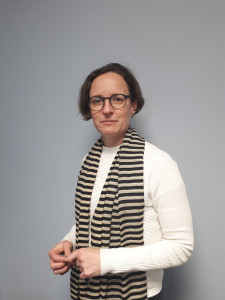
Riikka Aaltonen
Ministry of Economic Affairs and Employment
Finland
Riikka Aaltonen is a Senior Adviser on Mineral Policy, with a MSc in geology and mineralogy from the University of Turku, Finland. She has worked in exploration and mining in both Finland and Sweden, as well as for the Finnish Mining Authority. Since 2009 she has been at the Ministry of Economic Affairs and Employment, and since 2012 is a specialist in raw materials policies.
How do you see future innovation development in the extractive and forestry sectors?
There is huge potential in developing the extractive and forestry sectors. With the development of these sectors, future generations will have the necessary raw materials required by our society. A better knowledge base is an essential component, when it comes to unexploited resources and deposits. There is also great potential in today´s mining waste as a source of raw material. Future methods and techniques will eventually be developed through both trial and error and demonstration pilots.
What do you think will be the key drivers?
Funding and regulation are the two key drivers.
Funding is key, as more effective methods of production and technology will always attract interest from private enterprises. On one hand, profit driven companies have the means of investing in social acceptance and environmental solutions, which go beyond the regulatory limits. From that perspective, the solid financial standing of private companies is in everyone´s interest.
Regulation is another effective option to guide operations in the preferred direction. New regulation may sound daunting at first, and the adoption time period of new regulatory frameworks is necessary. However, the solutions required to manage performance have been accomplished over a reasonable time frame. This development and subsequent innovation would never have occurred without regulation. As companies become more familiar with new regulation and grow in confidence, so does the interest of operators to participate in much-needed research. This enables new service providers to invest in developing solutions for the market and creating new business opportunities.
What is the best scenario from an economic and sustainability point of view?
The minerals sector is regarded as being outdated and conservative in terms of the methods it uses. Disruptive innovation could be an approach and strategy to resolve this issue. Furthermore, the cyclical nature of the market is a challenge, as it restricts the possibilities for continuous investment in research and development and innovation activities. This element needs to be recognised and acknowledged when looking to the future of the sector.
Secondary sources of raw materials have huge potential, and the usability of by-product side streams might be a solution which could be facilitated by certain actions during primary extraction operations. However, it does not appear that concepts such as urban mining and other secondary sources will be able to fulfil raw materials requirements any time soon. The prerequisites of each process vary widely and recycling can be very complex, even raw material purity can become a complicated issue. Although it is a difficult issue to solve, reducing waste as much as possible is in everyone´s interest.
The second life of production areas, such as quarries, and their rehabilitation after mining or extraction is an important issue too. A man-made area is different from a natural one. Smart and well-planned rehabilitation can produce an artificial habitat that is crucial to support ecosystems of endangered species, and at times can be result in habitats that are more diverse than the original one.
What is the relevance of a project such as VERAM, in defining a roadmap for 2050 in the Finnish mining and forestry industries?
Both sectors have invested heavily in long-term projects. Therefore, predicting and forecasting long-term visions are vital when evaluating the feasibility of investments to be made. This is relevant both for the investment and operational environments. The VERAM roadmap is an excellent tool for building a coherent vision within Europe, even if each member state has different specific objectives and actions they wish to achieve. A joint roadmap provides us with a unique opportunity to reflect on the national issues, plans and visions.